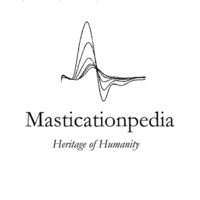Go to top
Normal Science
- Logic of medical language
- The Complex Systems
- Logic of medical language: Introduction to quantum-like probability in the masticatory system
- Conclusions on the status quo in the logic of medical language regarding the masticatory system
- 4° Clinical case: Temporomandibular disorders
- 5° Clinical case: Spontaneous Electromyographic Activity
Crisis of Paradigm
Research Diagnostic Criteria (RDC)
- Jaw movements analysis: Electrognathographic Replicator
- Transverse Hinge Axis
- Vertical Hinge Axis
- The Magic of the Condylar Sphere
- Jaw movements analysis:Pantographic Replicator
- Intercondylar Distance
- Advantage and Limit of Pantography
- Jaw movements analysis:Axiographic Replicator
- Interfacial Distance
- Advantage and Limit of Axiography
- Electromyography (EMG)
- EMG Interferential pattern
- EMG at rest position
- Quantitative Analysis of EMG
- Fourier transform
- Wavelett
Transcutaneous Electric Nerve Stimulation
- Free way space before stimulation
- Free way space after stimulation
- Closing trajectory from TENS
Beyond the RDC
Conclusions to the Paradigm crisis chapter
- Incompleteness in the 'Research Diagnostic Criteria'
- Need for a new paradigm
Extraordinary science
Masticatory Neurophysiology
- Center of masticatory pattern
- Mesencephalic mecchanism
- Trigeminal Motor nucleus
Sensory network
- Proprioceptive mechanisms
- Neuromuscular spindles
- Sensory mechanisms from the depressor muscles
- Golgi Tendon organs
- Role of impulses from the neck muscles
- Periodontal and oral Sensory Factor
- Pharyngeal sensory closure
- Sensory factors of the TMJ
Trigeminal System Connectivity
- Definition of the Fundamental Unit
- Structural and functional connectivity separation
- Understanding of 'Emergent Behaviour'
- Connectivity measurement
- Maximal Neural Energy Evoked
- Bilateral Trigeminal neuromotor organic symmetry
- Functional motor symmetry
- Normalization concept
- Organic vs Functional Symmetry
- Neuro Gnathological Functions paradigm
- New Clinical Index
